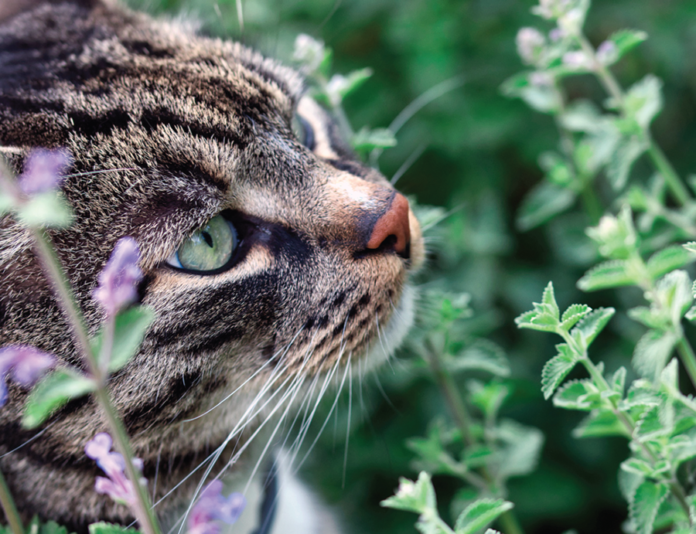About 60 to 70% of cats react playfully to catnip. Some rub their face on it and go to sleep. Other cats toss it, roll on it, chew on it, exhibiting wild play around the house. A recent study found that catnip may also protect cats from mosquito bites.
“Anyone who has ever sat in the field to observe animals ambushing prey knows just how difficult it is for them to keep still when there are many biting mosquitoes around,” says Iwate University biologist Masao Miyazaki. “It does not seem unreasonable, therefore, to argue that there is a strong selection pressure” to keep away annoying bugs.
How They Decided
According to an article on sciencemagazine.org, catnip (Nepeta cataria) and silver vine (Actinidia polygama) are plants that contain chemical compounds called iridoids, which protect the plants against aphids. They are also the key to the euphoria produced in cats. In silver vine, the compound is nepetalactol. The related compound in catnip is nepetalactone. (Never heard of silver vine? It’s an Asian plant that many cats find even more intoxicating than catnip!)
To determine the physiological effect of these compounds, Miyazaki spent five years studying the plants. When 25 lucky pet cats were chosen to pick a packet with their chosen substance, each one grabbed the silver vine choice every time. A group of 30 feral cats, plus some big cats (one leopard, two lynxes, and two jaguars), showed the same results. Dogs and mice, on the other hand, ignored the special packets.
The researchers measured beta-endorphins—one of the hormones that naturally relieves pain and induces pleasure by activating the body’s opioid system—in the bloodstream of five cats five minutes before and after exposure to nepetalactol. The researchers found that levels of this “happiness hormone” became significantly elevated after exposure to nepetalactol, compared with controls. Five cats that had their opioid systems blocked did not rub on the nepetalactol-infused pouches and did not experience the “high.”
Mosquito Repellent
The researchers found that, along with the feline fun effects, these compounds also act as mosquito repellents, so cats rolling on them are somewhat protected from mosquito bites.
The next set of research projects was focused on the mosquito repellent activity of iridoids. The researchers conducted a mosquito challenge, similar to those in which people put a treated arm in a container with mosquitoes to count how many bites they get. For the cat study, sedated cats who had been treated with nepetalactol had their heads slipped into a chamber with mosquitoes. The treated cats got 50% fewer mosquito bites than the untreated ones did.
Most scientists and pet owners assumed the only reason that cats roll around in catnip was for the euphoric experience, but “our findings suggest instead that rolling is rather a functional behavior,” says Miyazaki.
The researchers speculate that cat ancestors might have rubbed their bodies against the plants by chance, enjoyed the feeling, and kept doing it. It is not clear, though, whether it was the euphoric response the cats had—or the insect-repelling properties of the plant—that kept them rolling.
https://www.sciencemag.org/news/2021/01/why-cats-are-crazy-catnip




